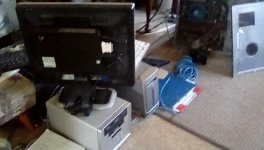NeXT
Veteran Member
I mean, has it not already been the upper-end of vintage for years now?
I've never seen anything past the Socket 8 Pentium pro as vintage and likely never will. By that point it's commodity hardware and
(hot take alert)
The only people who drool over newer hardware as Vintage are Gen Z's and late millennials (which I guess makes sense because as they were growing up, these were cheap second hand or family hand-me-down's). You got at least 25 years of computer hardware and history before that with micros alone. I do not see anything beyond 2000 as being overly special as by then all the oddball designs and brands were dead and folded and all you had left were mainly ATX PC's and PowerPC macs.
I have a Willamette P4 system here and even maxed out that's not vintage. It's like a NexGen CPU and board. It's a showcase piece for how much of a turd Netburst was.
I've never seen anything past the Socket 8 Pentium pro as vintage and likely never will. By that point it's commodity hardware and
(hot take alert)
The only people who drool over newer hardware as Vintage are Gen Z's and late millennials (which I guess makes sense because as they were growing up, these were cheap second hand or family hand-me-down's). You got at least 25 years of computer hardware and history before that with micros alone. I do not see anything beyond 2000 as being overly special as by then all the oddball designs and brands were dead and folded and all you had left were mainly ATX PC's and PowerPC macs.
I have a Willamette P4 system here and even maxed out that's not vintage. It's like a NexGen CPU and board. It's a showcase piece for how much of a turd Netburst was.
Last edited:

